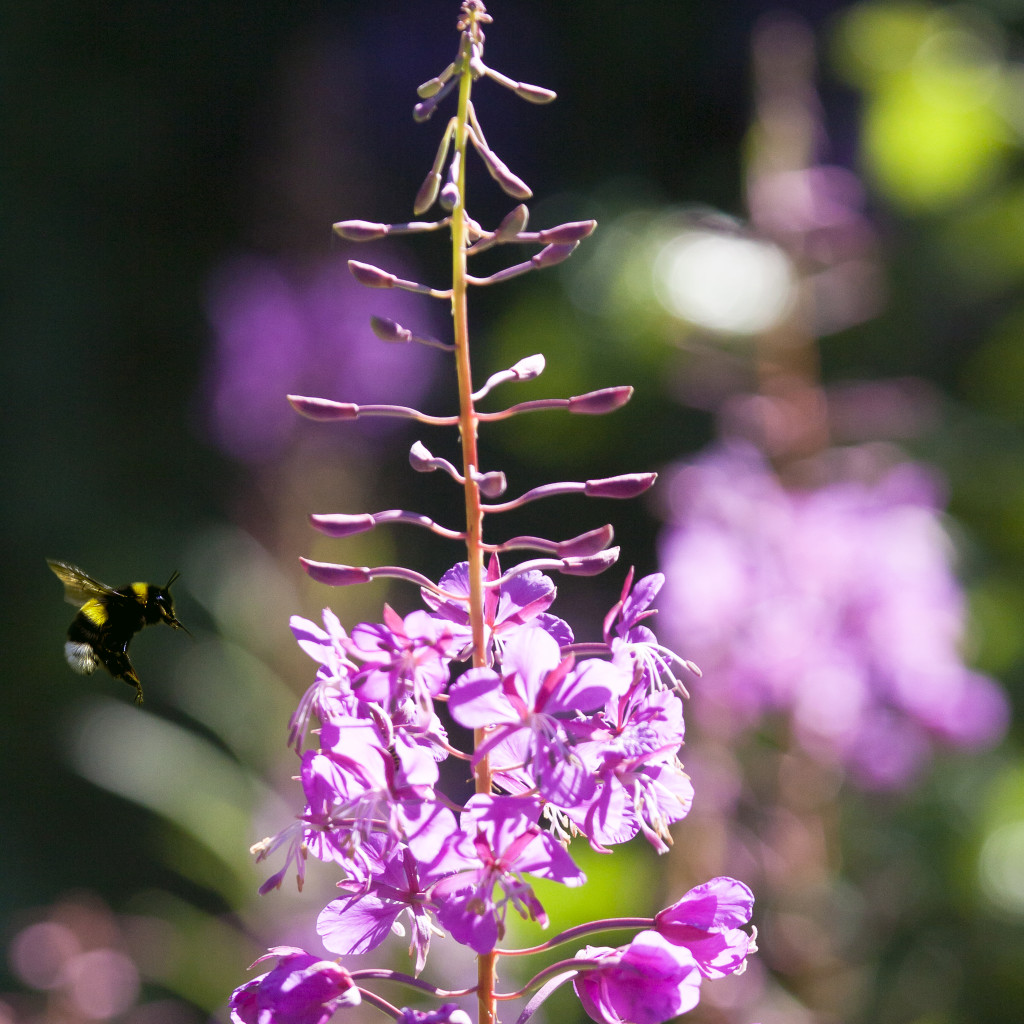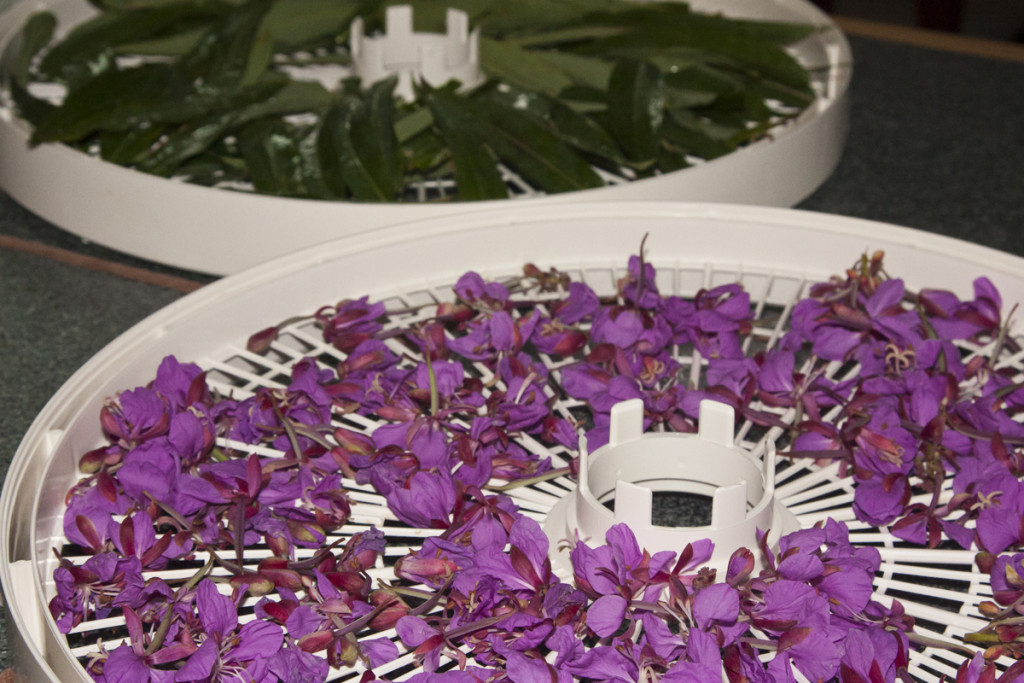 Fireweed: Epilobium angustifolium… spukWu’say (Twana)… willow herb… I call it love at first sight…
Fireweed: Epilobium angustifolium… spukWu’say (Twana)… willow herb… I call it love at first sight…
Are you making dietary changes to rebalance and improve your digestive tone and gut health? Additional to cultured foods and probiotics, drink fireweed tea speed along rebalancing.
This year I decided to become certified in using aromatic oils to heal. Many, many years ago I’d explored the world of herbs, so oils—being one of the active components in many herbs—are fairly easy to learn and I’m enjoy expanding this knowledge immensely. But recently I learned the benefits of this amazing Alaska native plant. I’ve never seen it’s essential oils made anywhere—nor is it particularly aromatic—but it certainly holds a special place in the heart of us Alaskans and other places of the Pacific northwest.
Just as fireweed is often the first plant to restore a clear-cut, landslide, burn, or otherwise disturbed areas denuded of topsoil by creating an environment that will sustain a strong plant community—not just its own species, but the start of rebuilding a healthy ecosystem—fireweed leaf tea helps our small intestine and colon create a healthy environment where beneficial digestive bacteria can flourish, nutrients can flow into our body, and waste products can easily move out.
Fireweed tea is useful for chronic diarrhea, irritable bowel, recovering from food poisoning, recovering from poor dietary choices, sore mouth and swollen gums… everything along the digestive tract that needs rebalancing. And in true Ayurvedic fashion, when the gut is restored and its energy flowing properly, lung congestion clears up, allergies clear up, the liver now drains, even prostate inflammation. And just as it helps the gut epithelium, fireweed tincture can help sooth and heal skin problems (which in my book reflect gut imbalances anyway).
Fireweed is extremely high in vitamin C, bioflavinoids and other vitamin A building blocks, mucilages and pectin that help support colonies of probiotics and are soothing to skin and gut cells, potassium and other minerals, and tannins.
Please note, if you are pregnant or prone to nausea, fireweed can worsen nausea in some people.
Harvest & Preparation
 Harvest leaves and flowers for tea any time when the plant is blooming. The buds are edible and make a colorful if slightly bitter addition to salads (livers love bitters) but the leaves have now become more fibrous and bitter than we usually enjoy eating (young leaves and new shoots are delicious tender-wilted in butter and lemon… mmmm…)
Harvest leaves and flowers for tea any time when the plant is blooming. The buds are edible and make a colorful if slightly bitter addition to salads (livers love bitters) but the leaves have now become more fibrous and bitter than we usually enjoy eating (young leaves and new shoots are delicious tender-wilted in butter and lemon… mmmm…)
As with all wild plant foraging, please pick throughout a patch in a way that leaves the plant healthy for the future. The plants need to store nutrients so the root bed makes it through the winter, bees/other insects depend on finding nectar, and the plant must reseed itself. A native Alaskan taught me this: holding the fireweed stem just below the flowers with one hand, pinch the stem with the thumb and pointer finger of another hand and push down the length of the stem that has green and vibrant looking leaves. Leave the flowers on that stalk for the insects, use the same technique to pull flowers from another stalk, sparing the leaves.
Dry the flowers and leaves in baskets or paper bags or I use my food dehydrator set to its lowest temperature of 95 degrees F for about 24 hours.
Store in glass jars or bags. They will remain potent for about a year. To me, the smell of dried fireweed, has notes of berry and citrus and I find myself craving it as a refreshing summer drink with lemon. Enjoy!
Copyright © 2015 Marie Sternquist. All Rights Reserved







